I. Introduction
If you’re a shrimp keeper, chances are you’ve heard of Subwassertang. This plant has gained immense popularity in recent years as a natural food source, breeding ground, and shelter for shrimp. But what exactly is Subwassertang, and why is it so important in the world of shrimp keeping?
Subwassertang, also known as Round Pellia Incorrectly or Süsswassertang by the Germans, is a plant that is commonly used in freshwater aquariums. It has a unique appearance, with green fronds that grow in dense clusters.
Despite its popularity, Subwassertang is still without a classification. Most websites claim that it is Lomariopsis lineata which is incorrect, DNA testing done in 2007 has shown that it has only a 97% match with that species.
Most people see the number 97% and think that it means its a true match when it couldn’t be further from the truth, let me explain and then it will all become clear.
Humans and apes share around 99% of their DNA, but it’s the remaining 1% that sets us apart. This 1% difference includes crucial genetic changes that have allowed humans to develop unique physical and cognitive abilities, such as walking upright, speaking, and reasoning.
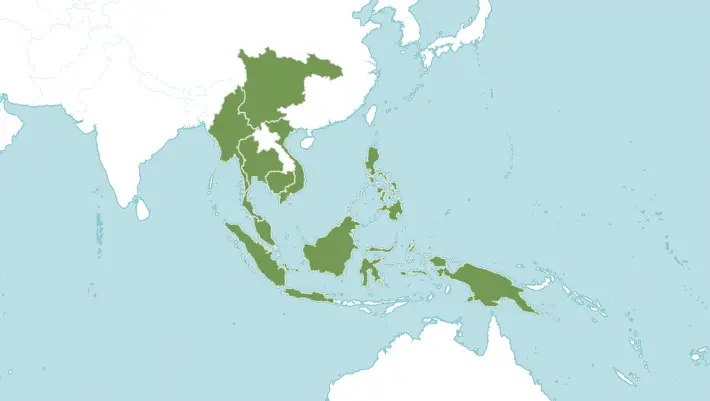
The 1% difference may seem minute, but it represents significant changes in genes responsible for brain development, speech, and other aspects of human biology.The difference in Lomariopsis lineata and Subwassertang is one is a terrestrial bush, and one is an aquatic plant.
It’s important to note that just because Subwassertang is not classified yet, it doesn’t mean that it’s not a valuable addition to your aquarium.
Correct identification of plants is essential, and the role of DNA testing in identifying Subwassertang cannot be overstated. In this article, we will explore the physical characteristics of Subwassertang, its benefits for shrimp keeping, and the proper care and maintenance techniques.
Subwassertang is often mistakenly called “Pellia moss” as I mentioned above, While the two plants may look similar, they are not the same species. Pellia moss, also known as Monosolenium tenerum, is a liverwort that has a more delicate and intricate frond structure compared to Subwassertang. In contrast, Subwassertang has round, densely-clustered fronds that give it a fuller appearance.
As a shrimp keeper myself, I have personal experience with Subwassertang and have seen firsthand the positive impact it can have on a tank. Let’s dive in and learn more about this fascinating plant.
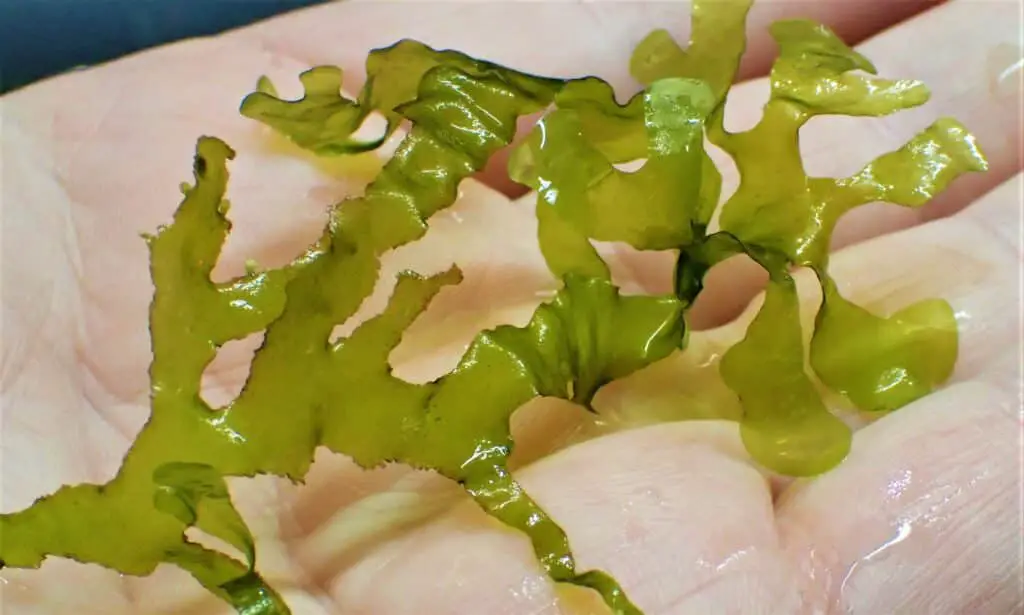
Apology
I would also like to offer an apology to my German readers on the murdering of the word Süsswassertang to Subwassertang which I helped contribute to, let me explain why this had to happen and then you will understand my reasoning for it , its as simple as this 99.9% of English speakers wont have a German Keyboard so a common English word for the plant was required.
The German spelling of Süsswassertang is Süßwassertang which then became Subwassertang for us English speakers. I know the eszetts are meant to sound like a double sharp S but it does look like a B hence rightly or wrongly the word Subwassertang being born.
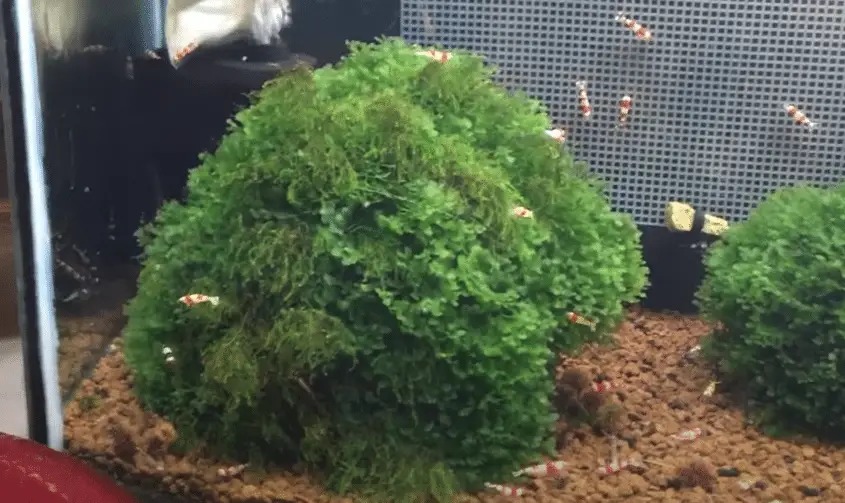
II. Description of Subwassertang
Subwassertang is a small, round, and delicate plant that doesnt really have leaves it grows in dense clusters. Its fronds are bright green, Under the right conditions, Subwassertang can form a thick carpet that covers the entire bottom of the aquarium.
Subwassertang is native to Asia, where it grows in slow-moving water and on the surfaces of rocks, driftwood, and other submerged objects. In the aquarium, Subwassertang can grow on almost any item but it should be noted there is no need to plant subwassertang in soils or other substrates, tie this plant to wood or rocks or let it float around freely.
or rocks or let it float around freely.
Subwassertang can thrive in a wide range of water conditions, although it prefers slightly acidic to neutral water with a pH range of 6.0 to 7.0. The ideal temperature range for Subwassertang is between 68°F/78°F or 20°C /25.5°C.

A video playlist about Subwassertang shall be at the bottom of the page.
III. Benefits of Subwassertang in Shrimp Keeping
Subwassertang is a highly beneficial plant for shrimp keeping and can provide a range of advantages for your aquarium. Here are some of the main benefits of Subwassertang for your tank:
- Natural food source for shrimp -Subwassertang’s shape makes it an excellent area for biofilm growth. The plant’s fronds are round and densely clustered, creating a vast surface area for biofilm to attach and thrive. Biofilm is a thin, slimy film made up of bacteria, algae, and other microorganisms that serve as a natural food source for shrimp. The dense clusters of fronds in Subwassertang provide a perfect surface for biofilm to grow, providing a continuous source of food for your shrimp.
- Shelter and breeding ground for shrimp – Subwassertang provides an excellent shelter and breeding ground for shrimp. The dense clusters of fronds create a safe and secure environment for shrimp to hide and breed. This can help to increase the survival rate of shrimp offspring, leading to a healthier and more robust shrimp population in your tank.
- Nitrate removal and water filtration – Subwassertang can help to improve the water quality in your aquarium by removing nitrates and other harmful toxins. it absorbs nutrients from the water, reducing the amount of nitrate and other harmful compounds in your tank. This can help to prevent algae growth, reduce the need for frequent water changes, and create a healthier and more stable environment for your shrimp.
- Aesthetic appeal and natural look in aquascapes – Subwassertang has a unique and beautiful appearance that can add visual interest to your aquarium. Its dense clusters can create a lush and natural look in your aquascape, and it can complement other plants and decorations in your tank. Additionally, the soft and delicate texture of Subwassertang can add a sense of tranquility and calmness to your aquarium, creating a peaceful and relaxing environment for both you and your shrimp.
Overall, Subwassertang is an excellent choice for shrimp keepers who want to create a natural and healthy environment for their shrimp. Its many benefits can help to improve the health and well-being of your shrimp, while also adding visual interest and beauty to your aquarium.
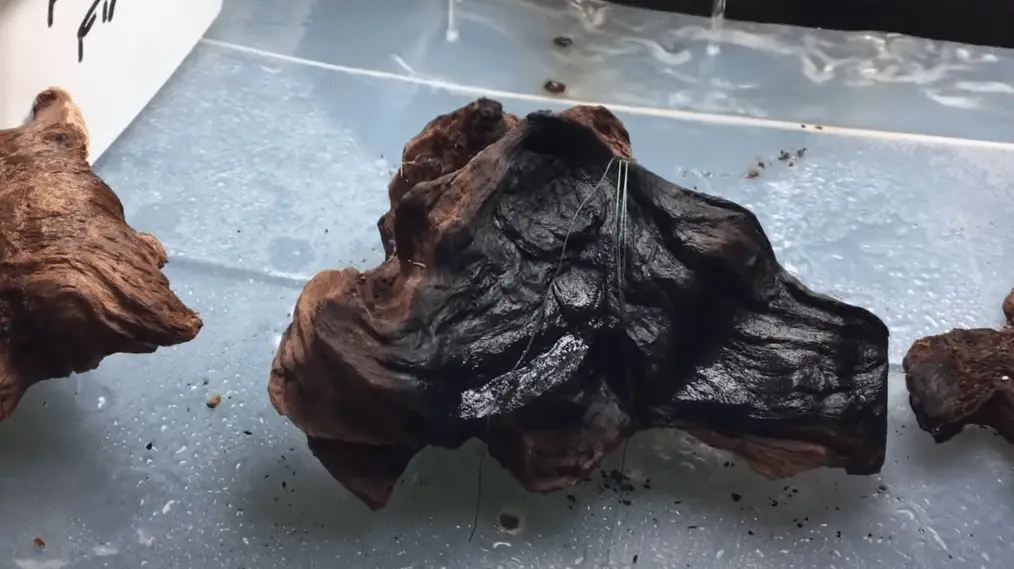
IV. Suwassertang Care
Subwassertang is not hard to grow in fact its pretty easy because it is a low-maintenance plant that can thrive in a variety of aquarium setups. However, to ensure that it grows healthy and strong, you need to provide it with proper care and maintenance. Here are some essential tips for caring for Subwassertang in your shrimp tank:
Choosing the right lighting
It does not require intense lighting, making it an excellent choice for low-light setups. However, moderate to high lighting can promote faster growth rate and better coloration. You can use a fluorescent or LED lighting to provide the necessary amount of light for the plant.
lighting to provide the necessary amount of light for the plant.
I use 6500k security light lighting on my tanks, my big tanks have 30 watt lights on them and the smaller tanks have 10 watt lights on them.
Propagation and growth rate
Subwassertang is a fast-growing plant that can propagate quickly. It reproduces through vegetative propagation, where new plants grow from the existing ones. You can propagate Subwassertang by separating the dense mass and planting them in different areas of the aquarium.
Subwassertang can also be propagated by attaching it to a mesh or a piece of driftwood and allowing it to grow and attach itself.
Pruning and cleaning tips
Although not 100% necessary subwassertang plants can require a little pruning, although you may need to trim it occasionally to maintain its shape and size. To do this, simply use a sharp pair of scissors to trim the fronds to the desired length. It’s also essential to clean Subwassertang regularly to remove any debris or waste that may accumulate.

Subbwassertang care common problems and solutions
Subwassertang can grow thick and dense to the point old growth is starved of light and dies back, which can result in the whole plant separating; regular retying for a few minutes fixes this issue.
Shrimp tanks size
You wouldn’t think it but tank size is important for subwassertang care, the bigger the better, although it will do well in little tanks too.
By following these essential care and maintenance tips, you can ensure that your Subwassertang stays healthy and strong, providing your shrimps with all the benefits they need. With proper care and attention, your Subwassertang can thrive and create a beautiful and natural environment in your shrimp tank.
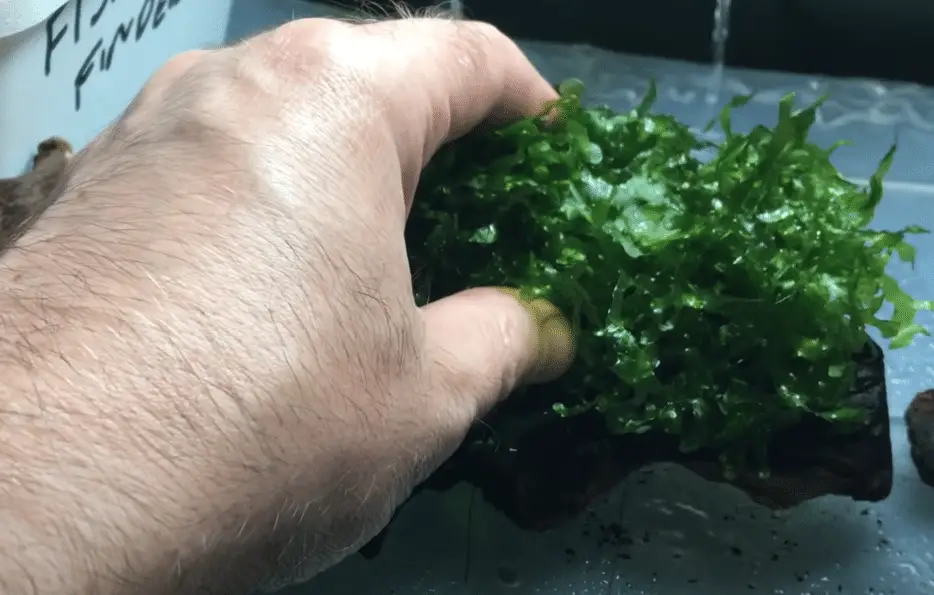
V. Tips for Attaching Subwassertang
Attaching Subwassertang to surfaces like wood, rocks, or other aquarium decorations is a simple process that can be done in a few easy steps. Here are some tips for attaching Subwassertang to surfaces:
- Choose a surface: First, choose the surface you want to attach the plant to. This could be driftwood, rocks, or other aquarium decorations. Make sure the surface is clean and free from any debris or contaminants.
- Get your materials ready: Gather the materials you’ll need to attach the plant, such as cotton thread, fishing line, or cable ties.
- Cut the plant: Use a pair of scissors to cut a small section of Subwassertang from the main clump. Make sure to include some roots with the cut section.
- Attach the plant: Use your chosen method (thread, fishing line, etc.) to attach the plant to the chosen surface. Wrap the thread tightly around the base of the plant and the surface you want to attach it to, tying it securely in place. Be careful not to damage the plant when attaching it to the surface.
- Monitor and adjust: Monitor the plant over time to make sure it’s securely attached and not coming loose. Adjust the attachment method if necessary to ensure the plant stays in place.
By following these simple steps, you can attach Subwassertang to surfaces in your aquarium and create a beautiful and natural-looking aquascape.
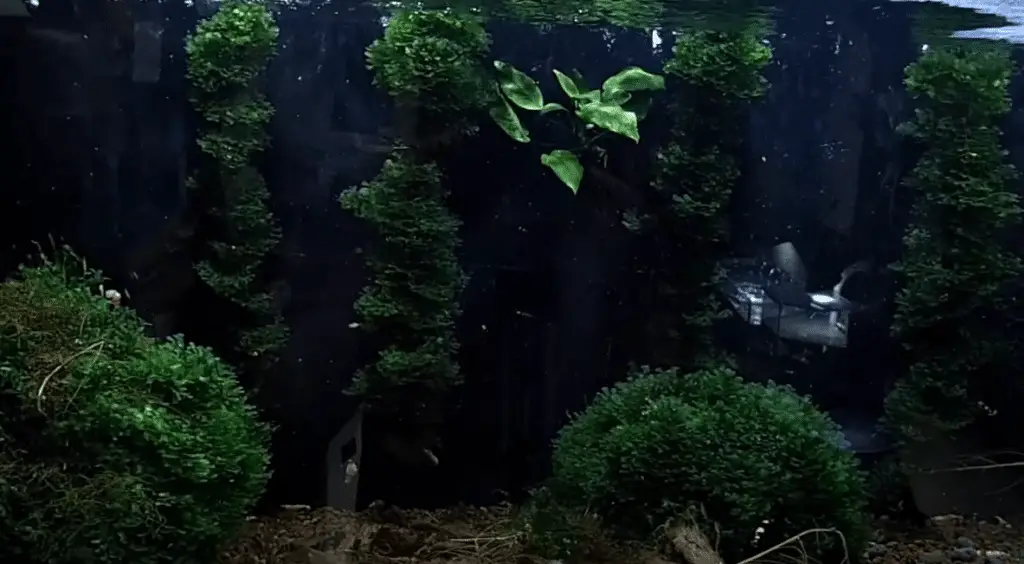
VI. Crayfish and large snails subwassertang care
One potential issue with Subwassertang in a shrimp tank is that some tank mates, such as fish, crayfish and large snails, may feed on it. This can be problematic as it can lead to the destruction of the plant and the loss of its benefits for shrimp keeping.
To prevent crayfish and large snails from eating Subwassertang, it is essential to provide them with an alternative food source that meets their dietary requirements. Both crayfish and large snails are omnivorous and will feed on a range of foods, including vegetables, algae, and animal-based protein.
By providing them with a varied diet that meets their nutritional needs, you can help to prevent them from turning to Subwassertang as a food source.
One way to ensure that your crayfish and large snails are getting the proper nutrition is to supplement their diet with a commercial food source specifically designed for their species. These foods are typically high in protein and contain a range of essential vitamins and minerals that can help to keep your aquatic creatures healthy and well-nourished.
Another option is to provide them with fresh vegetables and algae, such as spinach, zucchini, or spirulina. These foods are nutritious and can help to supplement their diet while also providing a natural food source that can help to deter them from eating Subwassertang.
In addition to providing an alternative food source, it’s also essential to monitor the population of crayfish and large snails in your aquarium. If the population becomes too large, they may begin to consume more of the plant, even if they are getting enough food elsewhere.
Regularly removing excess crayfish and large snails can help to prevent this issue and keep your Subwassertang healthy and thriving.
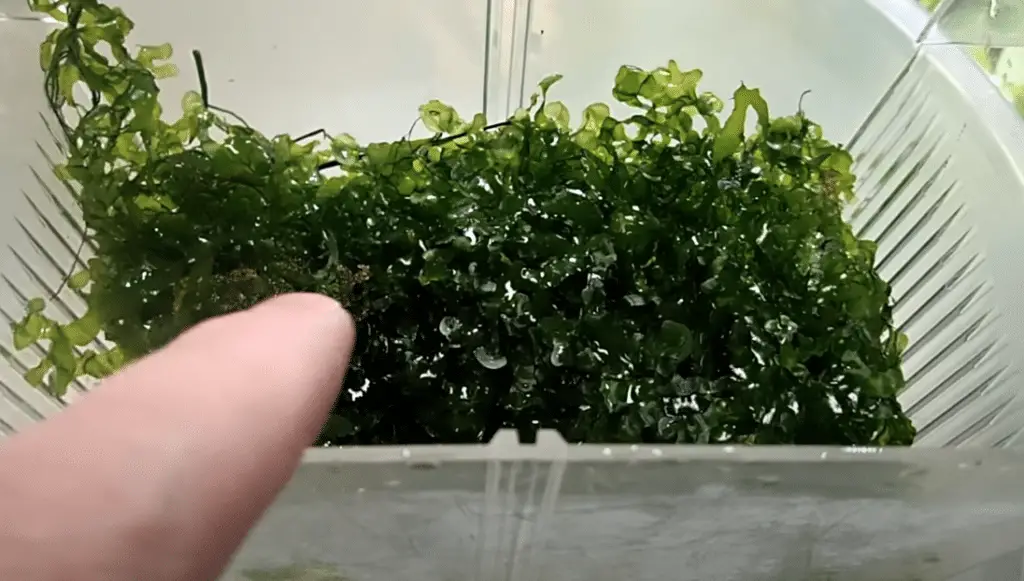
VII. Conclusion
Subwassertang is an excellent choice for shrimp keepers looking to create a natural and healthy environment for their shrimp. Its many benefits, including serving as a natural food source, shelter, breeding ground, nitrate removal, and aesthetic appeal, can help improve the overall health and well-being of your shrimp while creating a beautiful aquascape.
It’s essential to understand the significance of correct identification and DNA testing when it comes to Subwassertang. Despite most websites claiming that it’s Lomariopsis lineata, recent DNA testing has shown that it’s a different species with similar characteristics.
Correct identification and understanding of a plant’s natural habitat and distribution can help create the right environment in your aquarium, ultimately improving the health and well-being of your shrimp.
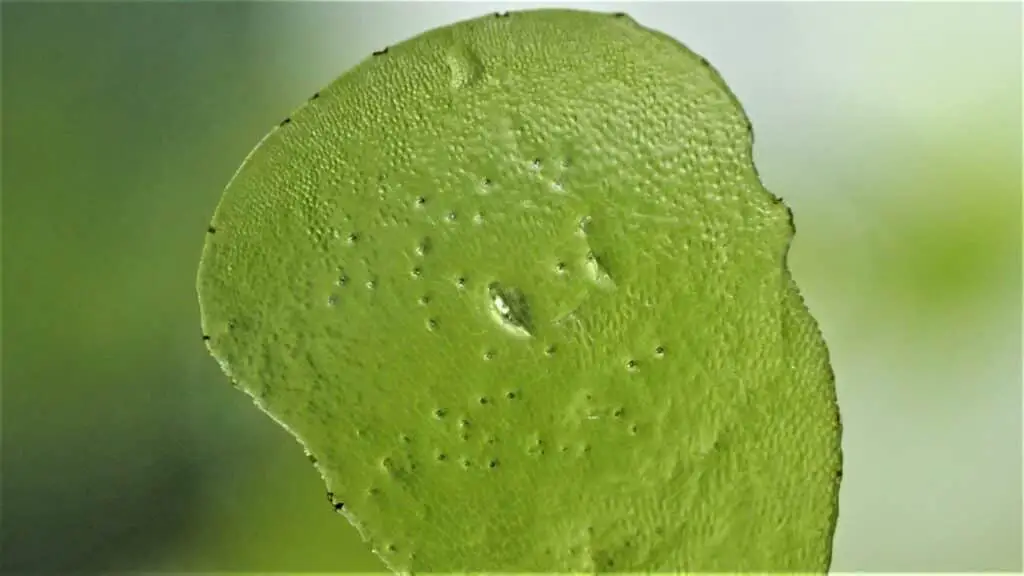
VIII. Fun Facts
Back in 2016, I received a shipment of shrimp from Germany that contained a tiny piece of Subwassertang, about the size of a pinky fingernail. Rather than discard it, I decided to try and cultivate the plant to see if it would grow.
To my amazement, the small piece of Subwassertang thrived and grew into hundreds of kilos of plants. It was incredible to see the remarkable growth potential of this popular plant, and it’s a testament to its hardiness and adaptability.
We hope this guide has been helpful in understanding Subwassertang and its benefits in shrimp keeping. If you’re considering adding Subwassertang to your tank, make sure to follow the care and maintenance tips discussed in this article.
IX. FAQ
Q: What is Subwassertang? A: Subwassertang is an plant commonly used in freshwater aquariums. It has small, round, green fronds that grow in dense clusters.
Q: Is Subwassertang the same as Lomariopsis lineata? A: Most websites claim that Subwassertang is a type of Lomariopsis lineata, but recent DNA testing has shown that it’s a different species with similar characteristics.
Q: What are the benefits of Subwassertang in shrimp keeping? A: Subwassertang can serve as a natural food source, shelter, breeding ground, nitrate removal.
Q: What are the ideal growth requirements for Subwassertang? A: Subwassertang can grow in almost any substrate, although it prefers a fine-grain substrate like sand or gravel. It does not require intense lighting, making it an excellent choice for low-light setups. It prefers slightly acidic to neutral water with a pH range of 6.0 to 7.5 and a temperature range of 68°F to 78°F.
Q: How do I propagate Subwassertang? A: Subwassertang reproduces through vegetative propagation, where new plants grow from the existing ones. You can propagate Subwassertang by separating the dense clusters of fronds and planting them in different areas of the aquarium or by attaching it to a mesh or a piece of driftwood and allowing it to grow and attach itself.
Q: How do I care for Subwassertang? A: Subwassertang is a low-maintenance plant that requires little pruning. It’s essential to clean Subwassertang regularly to remove any debris or waste that may accumulate on the fronds. Subwassertang can be susceptible to algae growth, so it’s important to maintain stable water parameters and limit feeding to prevent this.
Q: Why is it important to correctly identify Subwassertang? A: Correct identification and understanding of a plant’s natural habitat and distribution can help create the right environment in your aquarium, ultimately improving the health and well-being of your shrimp.
Q: Is Subwassertang easy to grow? A: Yes, Subwassertang is considered an easy-to-grow aquatic plant, making it a popular choice for beginners and experienced aquarists alike. It can grow in almost any substrate, requires little pruning, and does not require intense lighting, making it a low-maintenance plant. However, it’s essential to maintain stable water parameters and provide the right conditions for the plant to thrive.
Q: Is Subwassertang good? A: Yes, Subwassertang is considered a good plant for a variety of reasons. It can serve as a natural food source, shelter, breeding ground, nitrate removal, and aesthetic appeal in shrimp tanks. Additionally, it’s a hardy and adaptable plant that can grow in almost any substrate and lighting conditions, making it an excellent choice for low-maintenance aquarium setups.
Q: Where do I put the Subwassertang? A: Subwassertang can be placed in almost any area of the aquarium, making it a versatile plant. It can be attached to driftwood, rocks, or other surfaces using thread or glue, or it can be placed directly into the substrate. Subwassertang can also be used to create a carpet-like effect by planting small clusters close together. Ultimately, the placement of Subwassertang in your aquarium will depend on your desired aquascape and the specific needs of your aquatic inhabitants.
